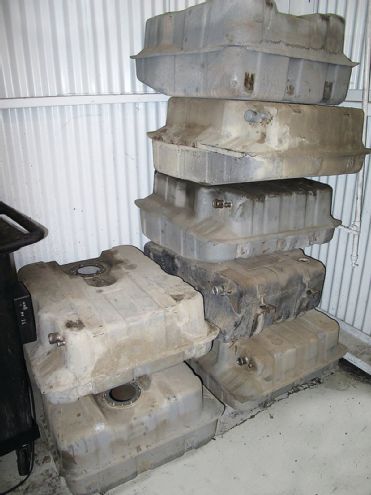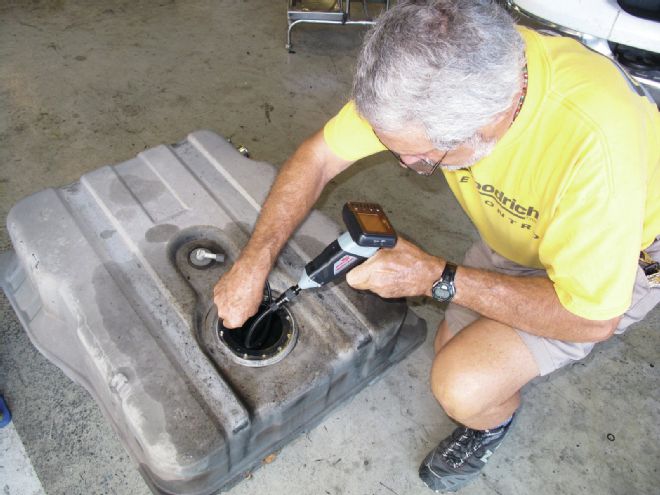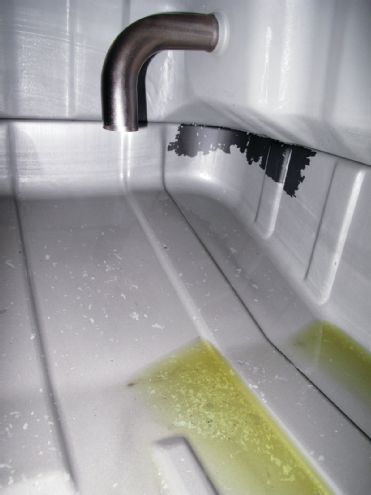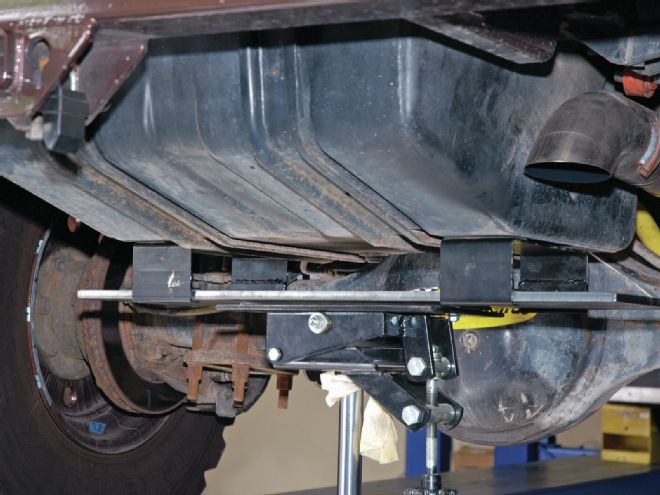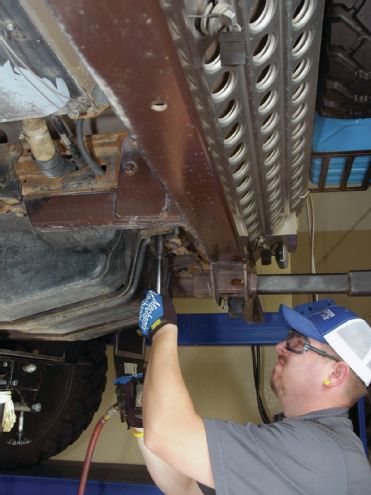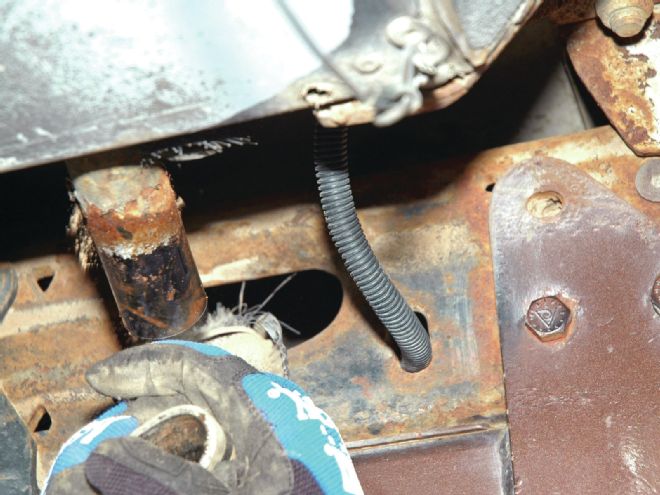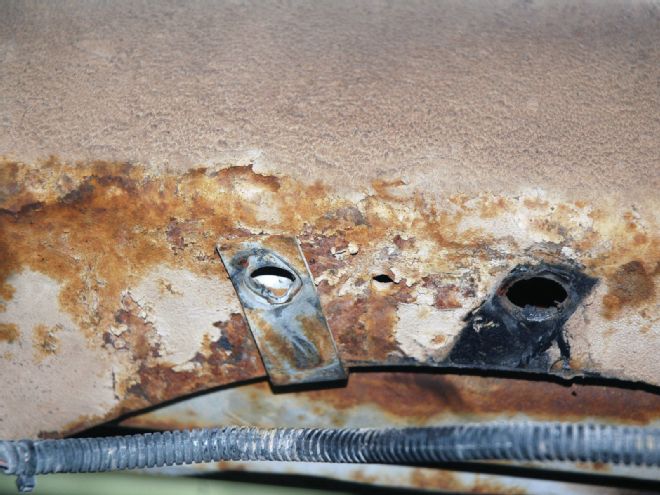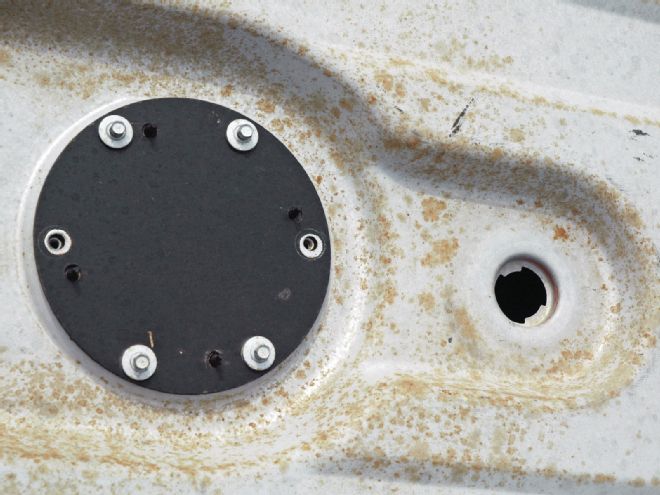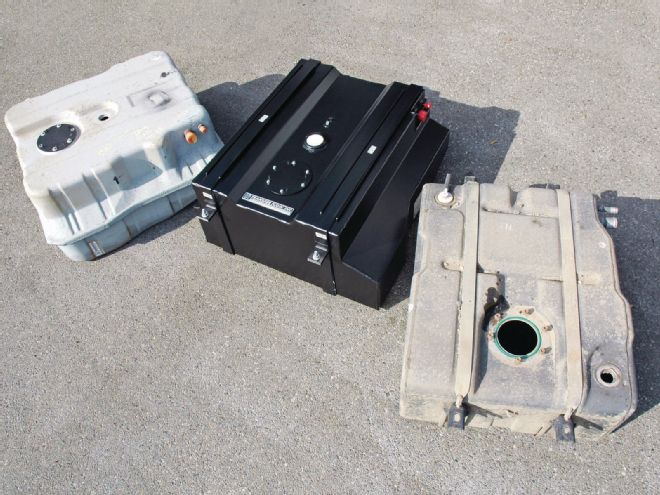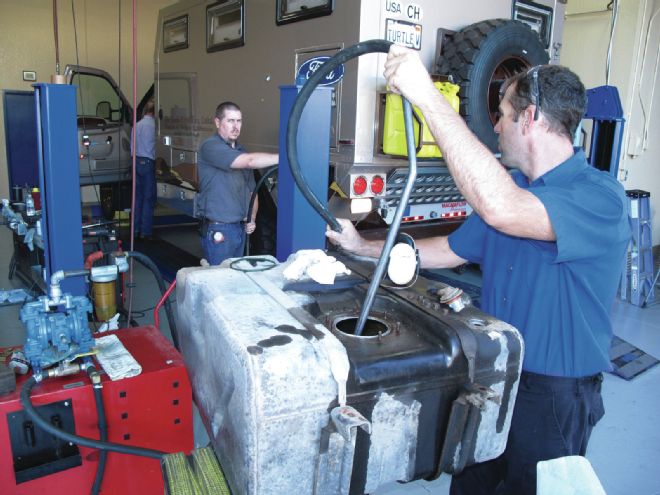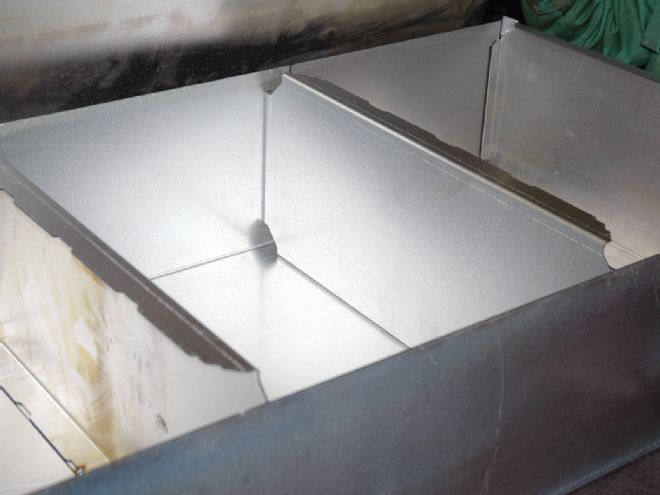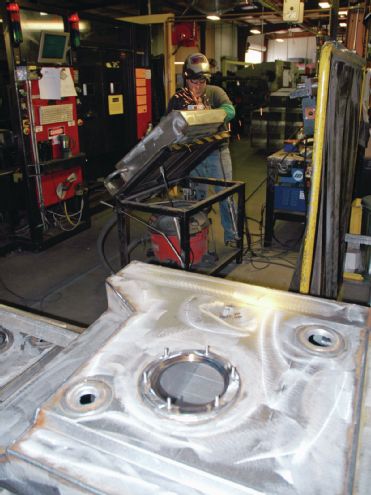Attention Ford diesel cab and chassis (and E-series diesel van) owners! Specifically, '99 to '10 Ford F-250 through F-550 vehicles (yes, that means your Class B van conversions, too) are affected by this growing problem. What problem, you might ask? Tank delamination.
This annoying problem has been popping up with increasing regularity, and the experts at Ken Imler Diesel Performance told us they have even seen the problem on '96 and '97 F-250 and F-350 pickups, and '99 to '10 F-650 and F-750 trucks.
One day, as you cruise down the highway listening to the rumble of the engine, there seems to be a weird vibration, like maybe a tire is out of balance. It gets worse until it feels like the engine is running on six cylinders. Out of fuel? Transmission slipping? By this time, you're wondering if you'll make it to where you're going. What's the problem?
The problem is that the liner inside the factory fuel tanks on these models mentioned can delaminate and peel off in little flakes. The first thing to go is the fuel filter, either in the tank, which is hard to get to, or the main filter. In the process, the fuel lines may be contaminated, and in worst-case scenarios, you could be looking at a clogged fuel pump or even injectors. That could be very expensive.
We spoke to several diesel experts in our area, and the general consensus is that the delamination may be caused by the variations in diesel fuels and additives, but that's just a guess. Some reports say the problem extends only from '99 to '08 vehicles. Others claim it extends all the way to '10 models.
According to a report from Reuters by Jonathan Stempel, Ford has been sued in a New Jersey federal court for allegedly selling F-Series pickup trucks and E-Series vans with defective fuel tank linings. The complaint says a technical service bulletin was sent to dealers advising them of the problem, but they neither recalled the affected trucks nor offered to repair them for free. There are hundreds of thousands of these vehicles out there. Here are some possible solutions.
Since delamination seems to occur between 20,000 and 120,000 miles, you can play Russian fuel-tank roulette and hope your truck or van is a survivor until you sell or trade it.
If you experience the problem firsthand, you can replace the tank with another Ford tank at a cost of $1,211.37 to $2,420.00, and somewhere between $200 and $400 for labor to R&R the tank. The bad news is, Ford will just be selling you the same tank with the same liner.
Possibly the least expensive solution is to have your Ford tank removed and have it boiled out by a competent shop like Service Center Radiator Works in Auburn, California. After boiling the tank in a caustic solution of sodium hydroxide, the factory liner is completely removed. Then it's steam cleaned and flushed, and a new liner is applied to the tank by pouring in a liquid syrup, turning the tank around to coat all surfaces and letting it cure. The process takes three days. There are several companies that make the coating, but finding a shop in your area that has the equipment and expertise to do this work may prove challenging. Service Center Radiator Works uses a coating called Red Coat and has not had any problems with it. This procedure will cost you about $245 to $400, plus the labor at an auto repair facility for the R&R.
Another option is to replace the defective tank with an aftermarket version. Titan Fuel Tanks produces a replacement tank constructed of military-grade, cross-linked polyethylene (XLHDPE)—for $895.90 plus shipping and handling—which the company says is "virtually impervious to the corrosive effects of diesel and most biodiesel fuel blends, as well as common fuel additives that are blamed for degrading the protective linings of original equipment steel tanks." Original straps and sending units can be used. If you don't like the idea of a plastic fuel tank, skidplates are available.
The words "most biodiesel fuel blends" bothered us, so we called Klint Anderson, an engineer at Titan Fuel Tanks. He agreed with Todd LaPant, Engineering Manager at Transfer Flow, that there are some homebrews and small refineries that make extremely low-grade biodiesel fuels that may contain high levels of methanol and sulfuric acid. These will most likely damage other parts of your fuel system before affecting the tank.
Since we are the proud owners of a '99 Ford F-550 diesel, when Ken Imler at Imler Diesel Performance in Sacramento, California, brought the condition to our attention, we were a bit surprised we had not heard of it before. We contacted Transfer Flow in Chico, California. Transfer Flow is one the largest designers and manufacturers of aftermarket and OEM fuel tanks, and its crew has a knack for getting the most out of the space available. In this case, they have a direct replacement for the defective Ford tanks, ($854.52, plus shipping and handling), and they managed to up the capacity by an additional 7 gallons. New hold-up straps are supplied, and factory sending units can be reused.
All Transfer Flow tanks are made of 12-gauge aluminized steel and incorporate baffles to limit sloshing and add strength. Being made of aluminized steel, they are compatible with all ASTM diesel fuels (ASTM D975-11b Standard Specification for Diesel Fuel Oils). This specification covers seven grades of diesel fuel oils suitable for various types of diesel engines. These grades are: Grade No. 1-D S15, Grade No. 1-D S500, Grade No. 1-D S5000, Grade No. 2-D S15, Grade No. 2-D S500, Grade No. 2-D S5000, and Grade No. 4-D.
New designs like this 47-gallon replacement system must go through rigorous testing, including being dropped, full of water, from a 35-foot tower onto a steel plate on a concrete-reinforced platform. If it leaks, it goes back to engineering. All finished units go through a pressurized leak test, fully submerged in a water bath before they are washed, dried, and powdercoated. Transfer Flow can install them at its facility for $200.
Other diesel service centers we contacted told us the R&R labor could take from two to four hours or more and cost from $200 to $450 if lines and fuel filters needed to be flushed. If you need a new sender, it will run you another $504, and we don't even want to think about the cost of new injectors.
Replacing our '99 40-gallon tank was a routine job for Eric Harper at the modern Transfer Flow facilities, even though ours was more than half full of diesel. Straps were loosened and the tank was lowered enough to disconnect the fuel lines. With the old tank out, the factory fuel sender was removed and checked for proper calibration with an Ohmmeter before being reinstalled in the new tank. All seals were given a final pressurized leak test with soapy water. The new, 47-gallon tank fit like a glove, and the fuel from our OEM tank was transferred and measured. The final step was to top the tank off, 5 gallons at a time, for a record of exactly how many gallons it took to correspond to the factory fuel gauge. We know, for example, that when the "Low Fuel" light comes on, we have about 4 gallons left, and when it's topped to the brim, we have a "full" of 5 gallons before the needle moves.
For those of you who have been stalled on the side of the road, all this is not news. For the thousands of '99 to '10 Ford cab and chassis or E-Series diesel van owners, there's no easy fix, and there is no way to know what's going on inside your fuel tank. The clock is ticking.
